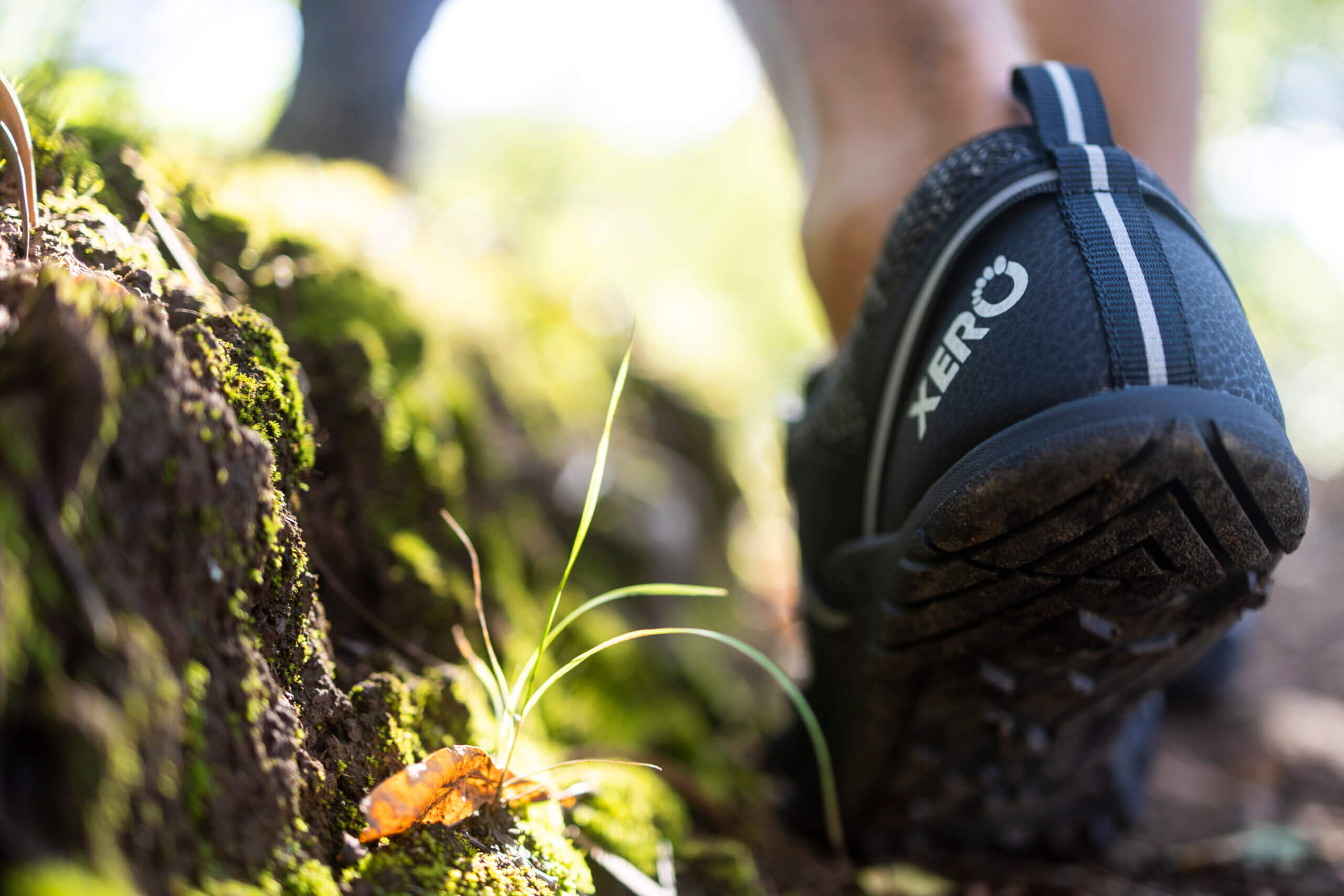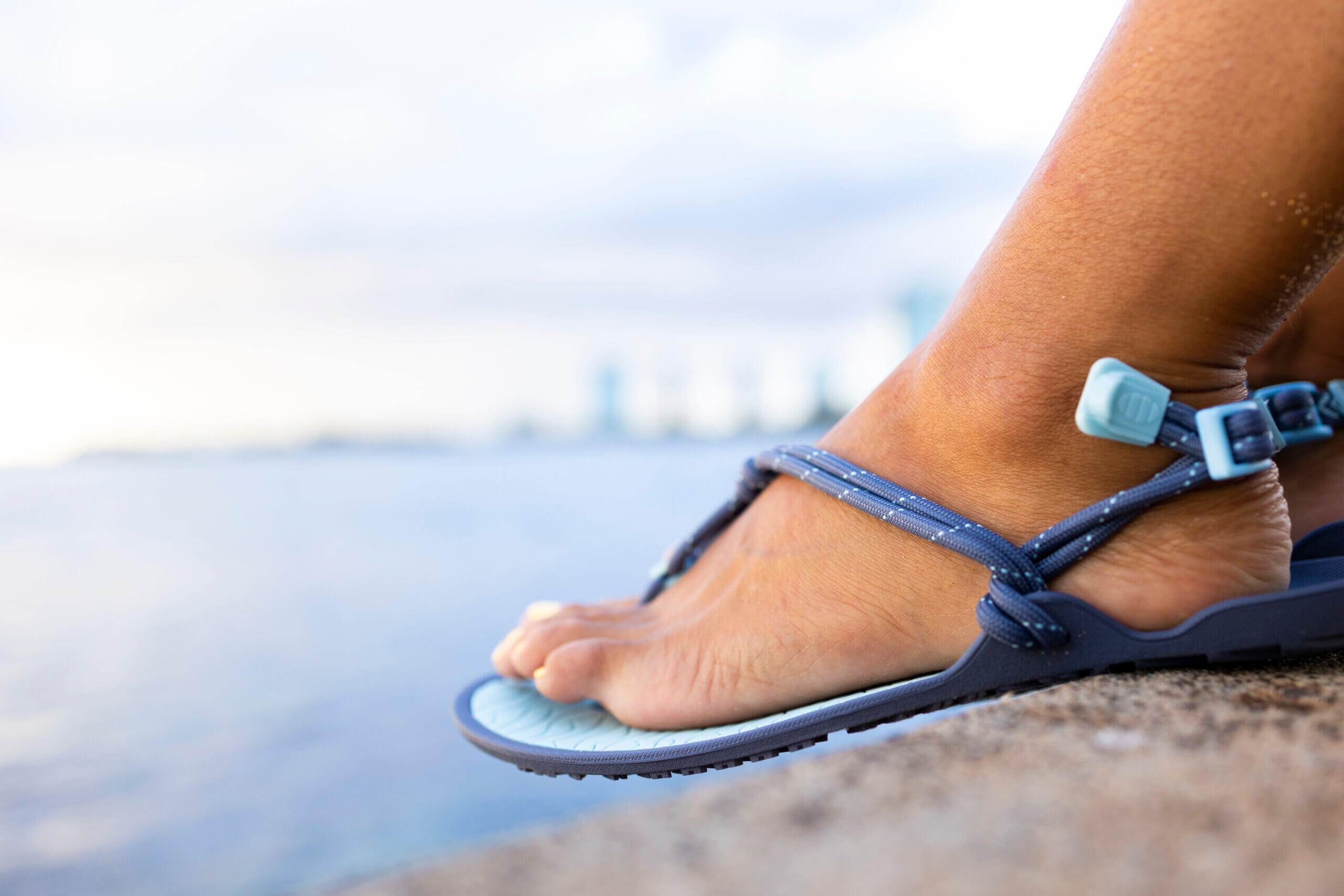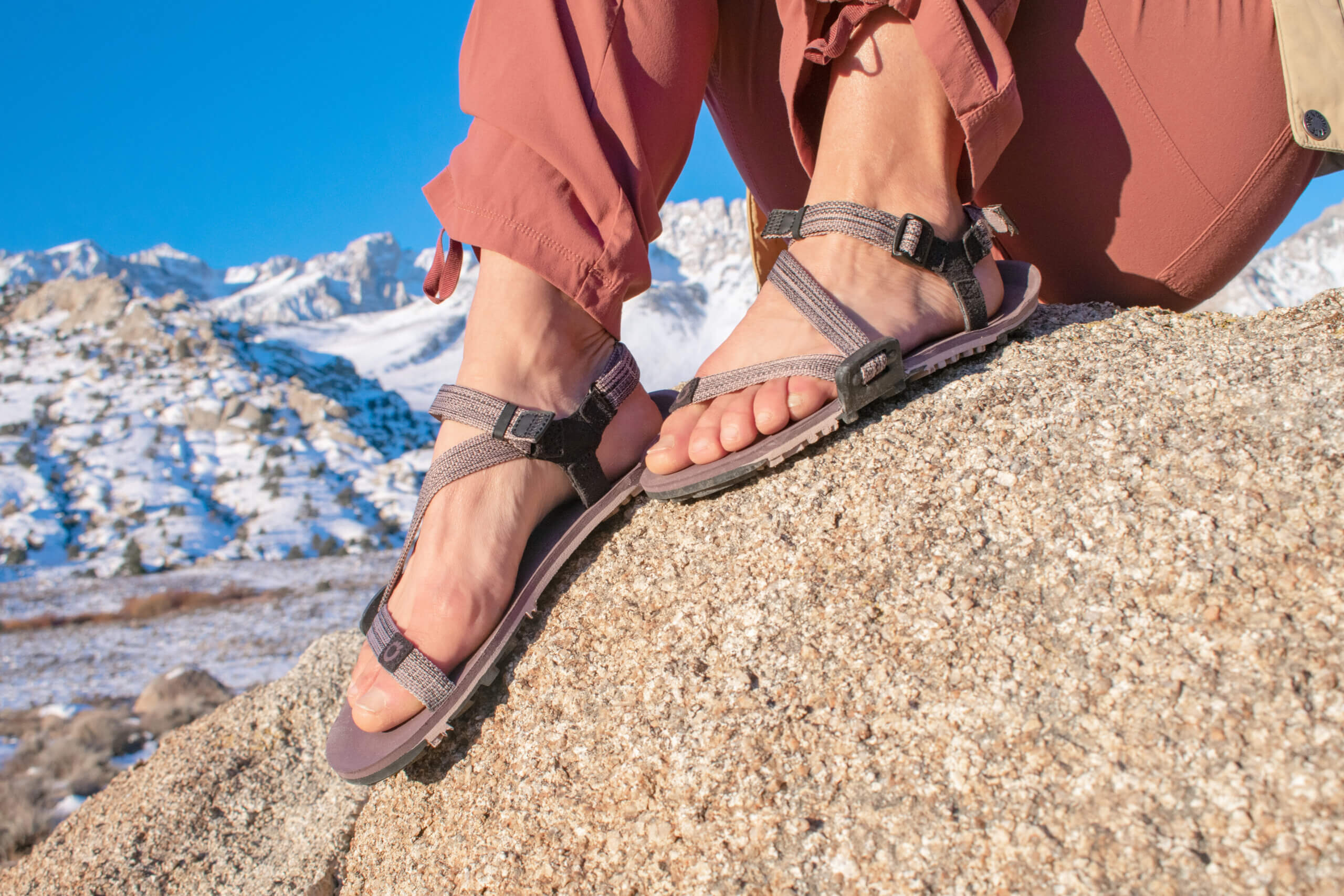Our Promise to Sustainability
Our company’s official name is Feel the World, Inc. not just because of how you experience connecting to the world in our shoes, but because we’re sensitive to the ecological impact of footwear manufacturing. It’s important to us that we be honest about our environmental impact and tell our green story only when it’s genuine, so we don’t engage in the misleading practice of greenwashing.
We’ve built our sustainability initiative on three guiding principles: Build it to Last, Use Less, and Source Better. We aim for these pillars — but we know we’re not perfect, and always strive to do better. Below you can learn where we are in our green story, and where we’re going from here.
Where We Are
As a young footwear brand, we only recently became able to do a deeper dive into our impact on the environment. However, we’ve always done our best to do right by the planet by following our three pillars.

Xero Shoes are built to stay on your feet, not in a landfill. While most running shoe brands tell you to replace your shoes every 300–500 miles, our FeelTrue® rubber allows us to back our shoes with our 5,000 mile sole warranty.

With fewer components (such as no foam midsole), Xero Shoes put less strain on the environment and take less energy to produce.

We’re committed to using materials that produce authentic environmental benefits. For this reason, many shoes throughout our product line use Hemp, Coffee Carbon Fiber, or rPET.
In addition to using sustainable materials, we’re committed to ensuring all our materials are safe, and that they are sourced ethically. We believe in being as transparent about these matters as the rest of our sustainability efforts, so we have our Restricted Substances Test Protocol and our Manufacturer Code of Conduct available here.
Where We're Going
As we move forward in our sustainability initiative, we’ll continue to use these pillars to focus our ecological efforts.
More Eco Friendly Shoes
Xero Shoes is committed to expanding our use of sustainable materials into new and existing styles. As we grow, and as new opportunities become available, our goal is to grow our list of sustainable products.
Our Zelen, released in Spring of 2022, represents our latest efforts and future goals in sustainability. We included recycled materials in the upper so this shoe would be sustainable from production to the end of its use.
Measuring Our IMpact
In addition to improving the eco-friendliness of our shoes, we have begun to gather data to measure the impact of our operations, manufacturing, and our product throughout its lifetime.
IMPACT OF OUR BUSINESS OPERATIONS
In 2021 we partnered with Lotus Engineering and Sustainability to do an inventory of our greenhouse gas emissions for our US and EU operations. This measured things like energy use for our offices, warehouse, and employee transportation. This fresh data has allowed us to establish a baseline for our operations and will allow us to set future goals, which you can keep an eye out for on this page.
Lotus found that our total carbon emissions for the year were 294 Metric Tons. According to the EPA, that’s the equivalent of 37 american homes per year, or the amount of energy that can be compensated for by a single wind turbine running for less than a year.
Our largest emissions output was from our US and EU offices and our warehouse “stationary energy”. These are for things like lighting, heating, things you might see on your house’s energy bill, but on a larger scale (plus a few forklifts). This made up 74% of our carbon emissions.
Following that was transportation at 22%, which includes commuting, our delivery van, and business travel.
4% is made up of waste (trash/landfill). And 0.2% is made up of refrigerants (A/C).
We’ll be using this newly acquired data to help guide our sustainability efforts in the future.
IMPACT OF OUR PRODUCTION
Coming soon is our use of the Higg Index, an evaluation tool for the manufacturing supply chain. This lengthy but valuable process is the shoe industry standard for evaluating a company’s environmental impact, from manufacturing to the end of its products’ use. With this information, we will be able to make adjustments to this process and do our part to reduce our impact on the environment.














